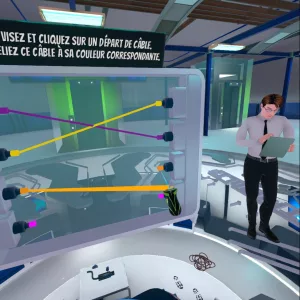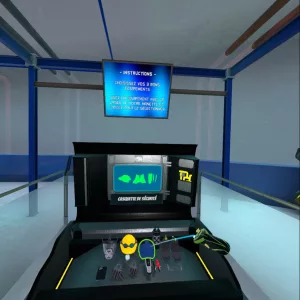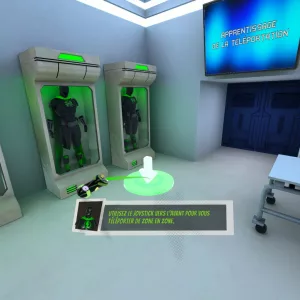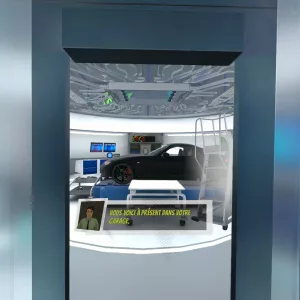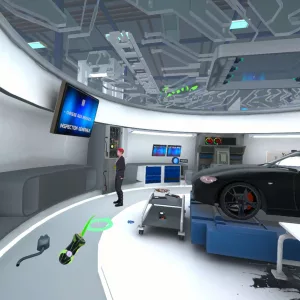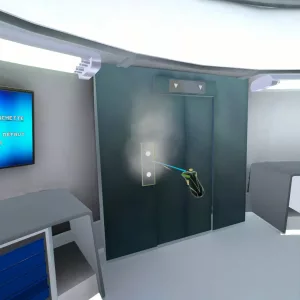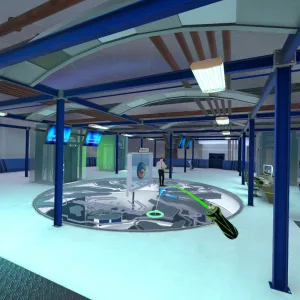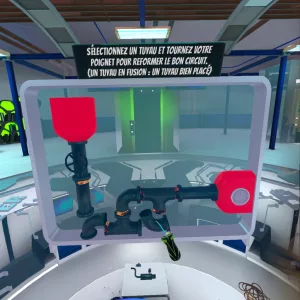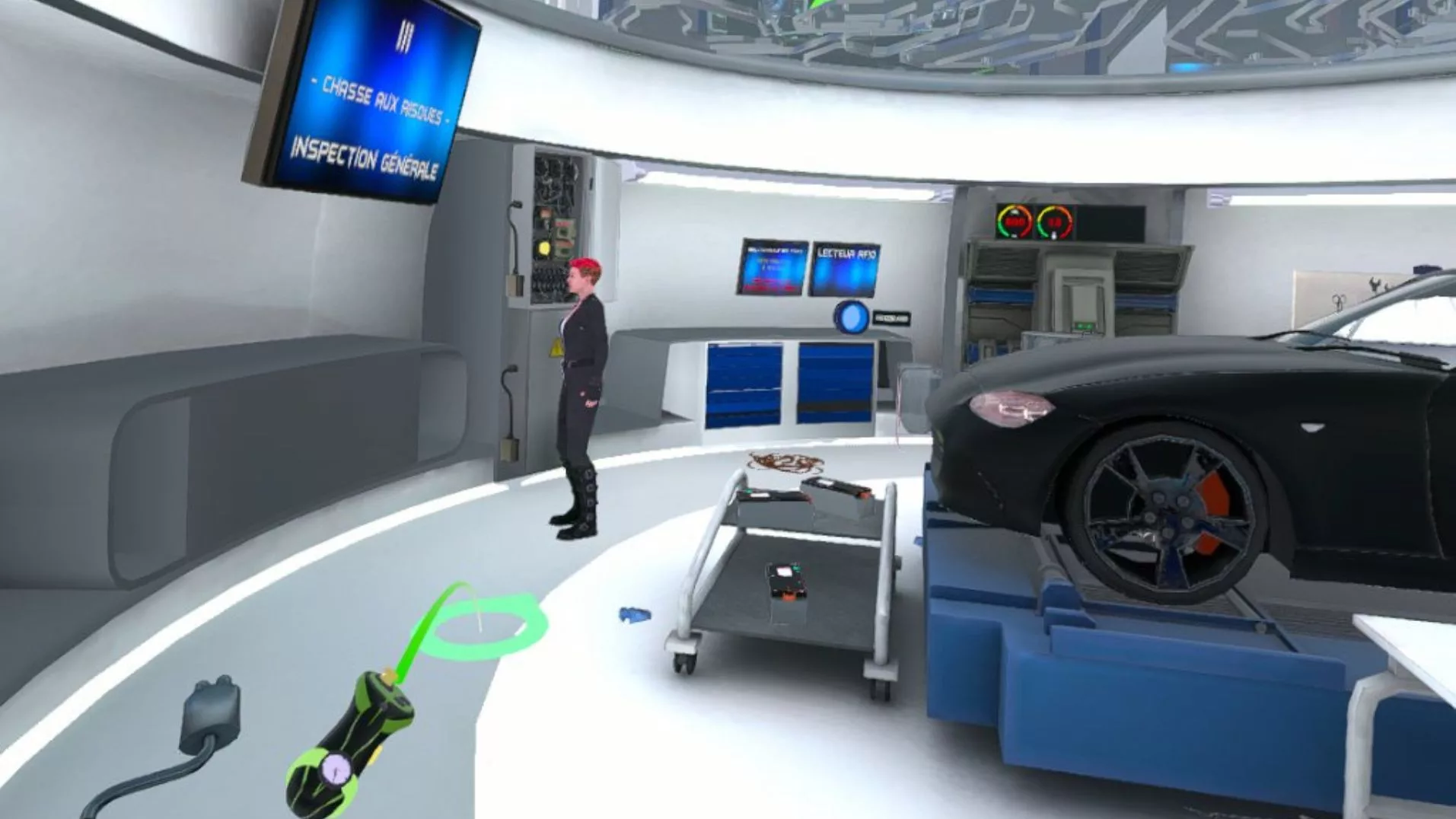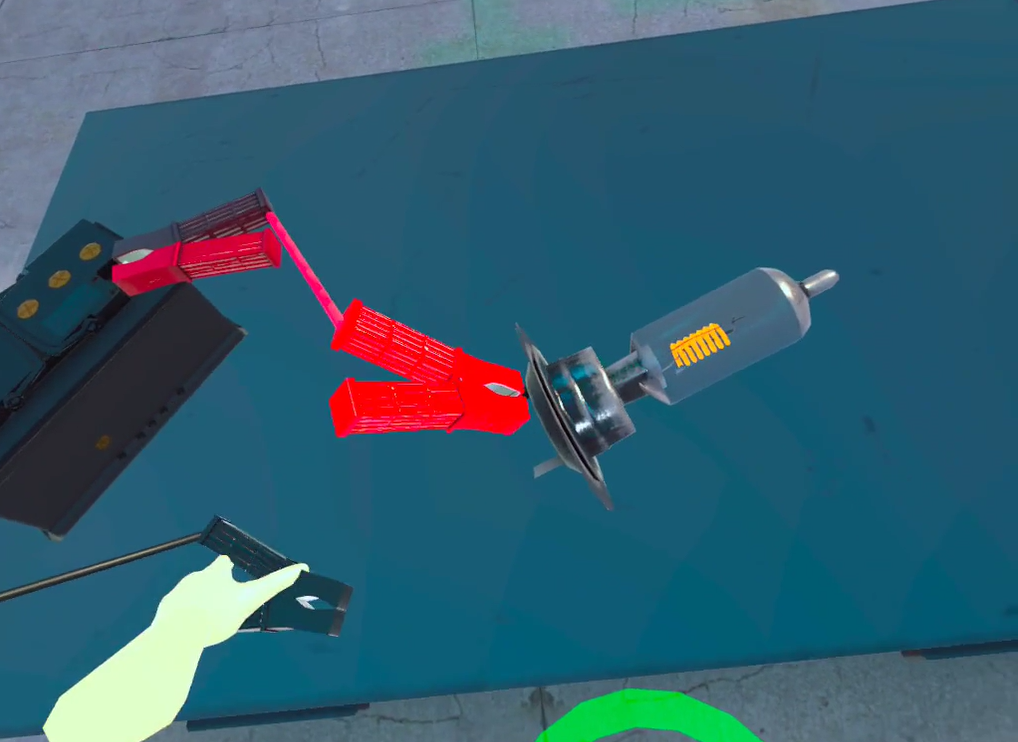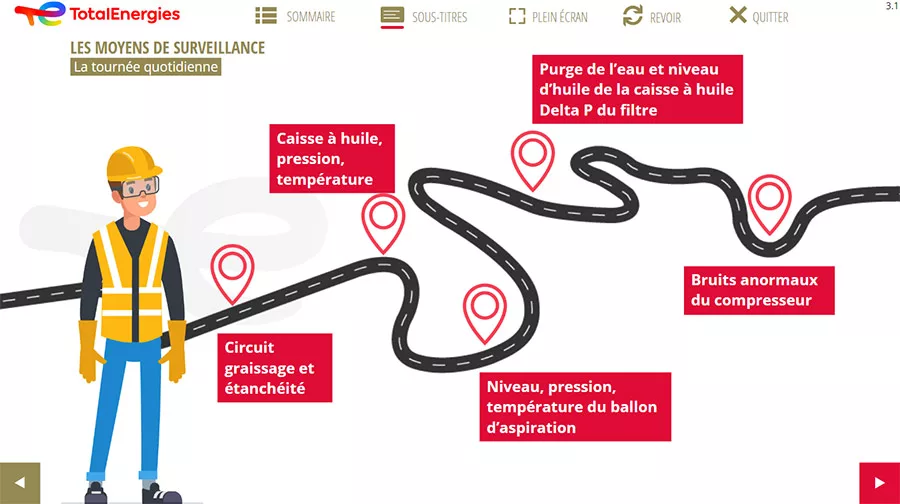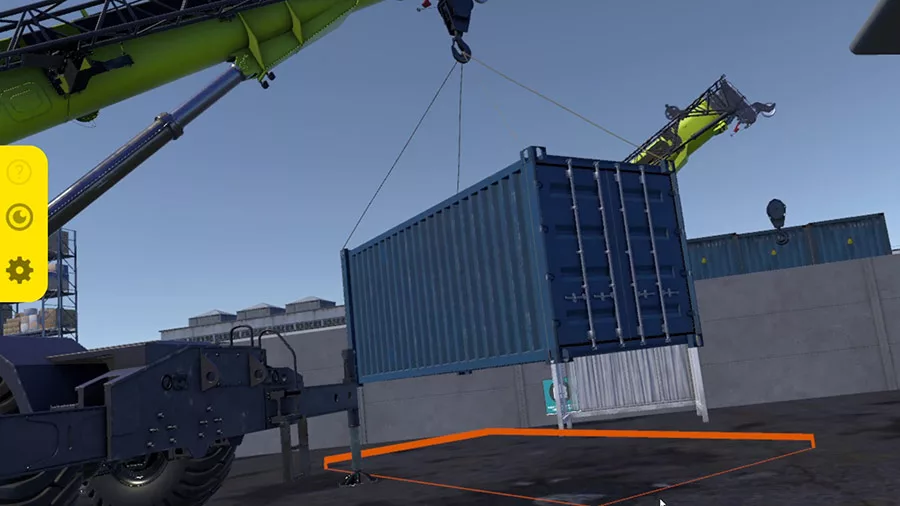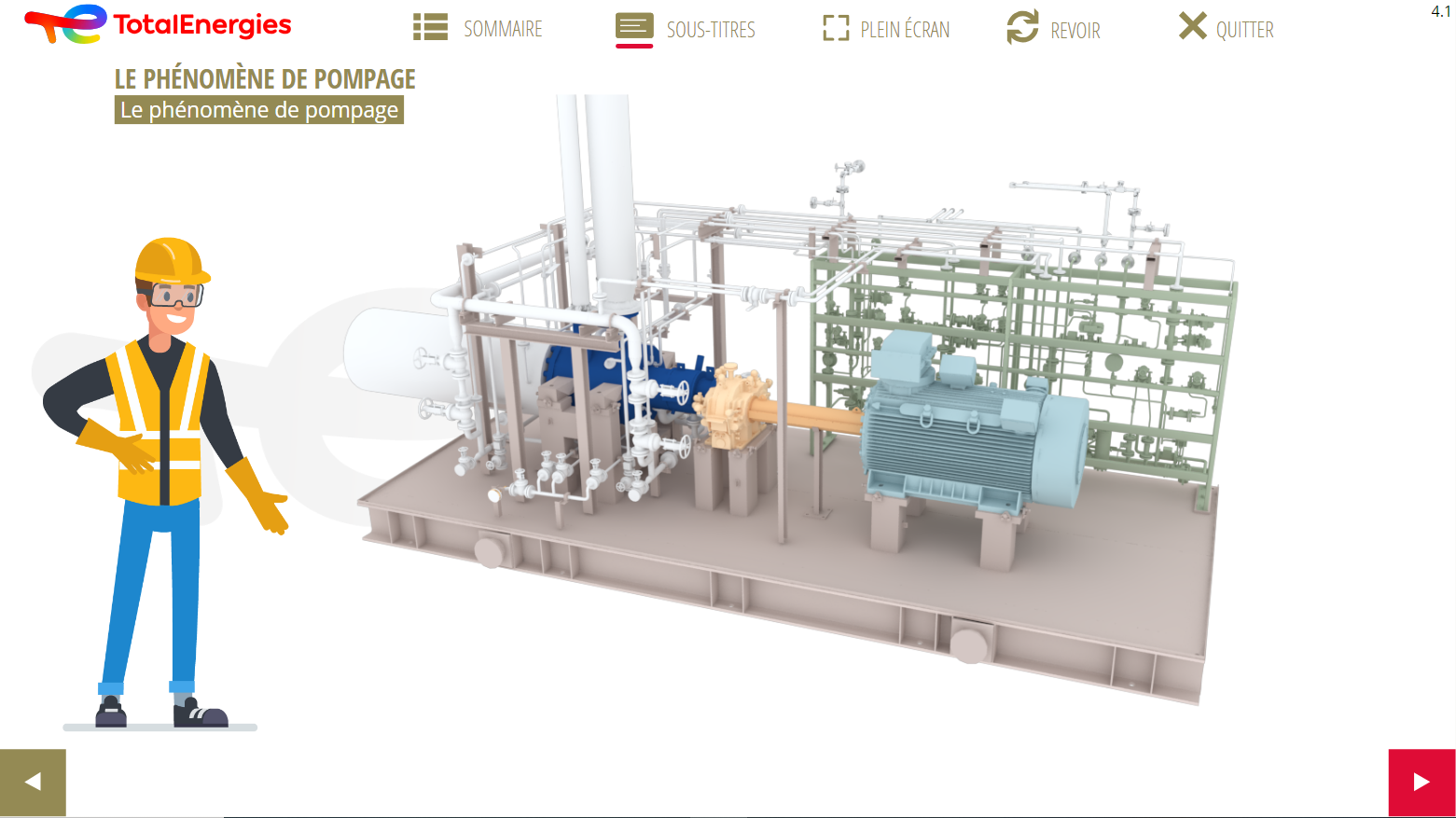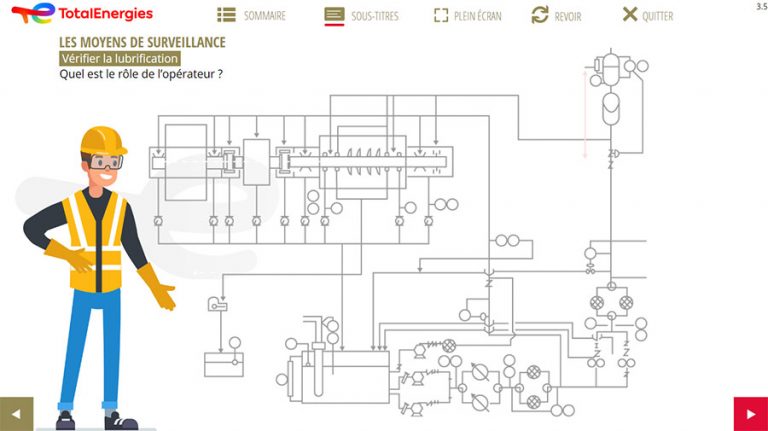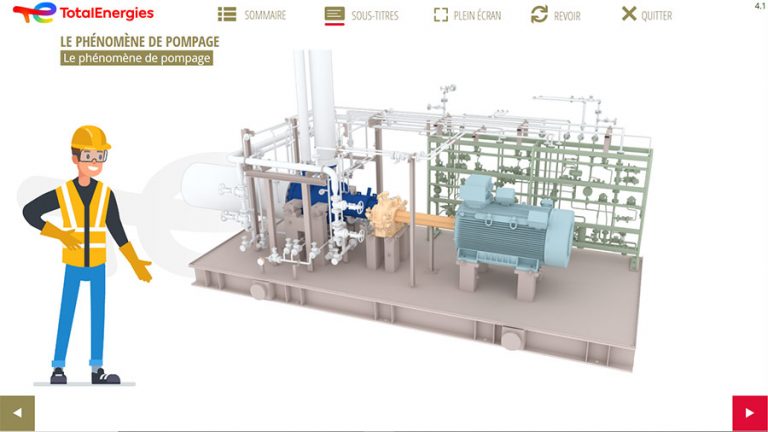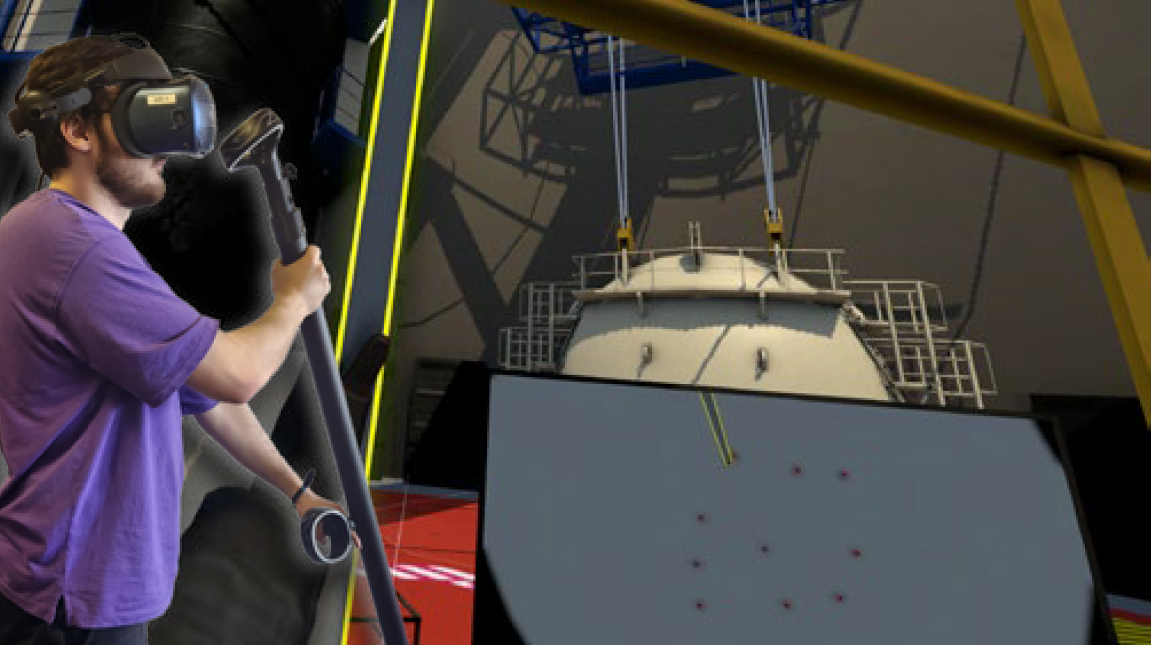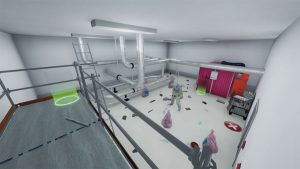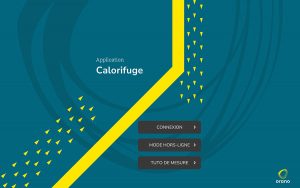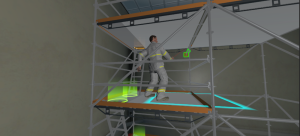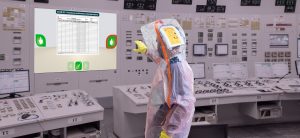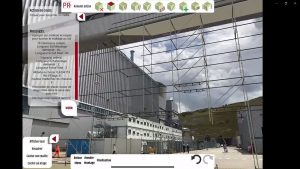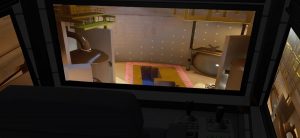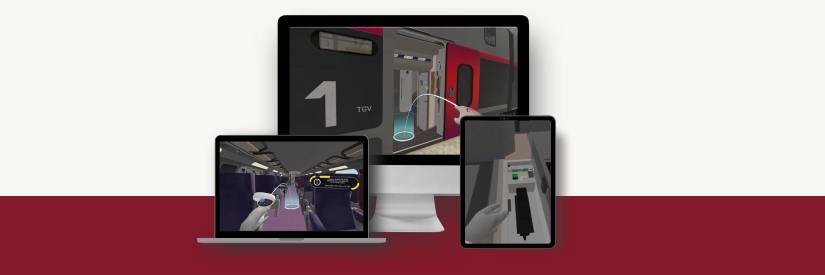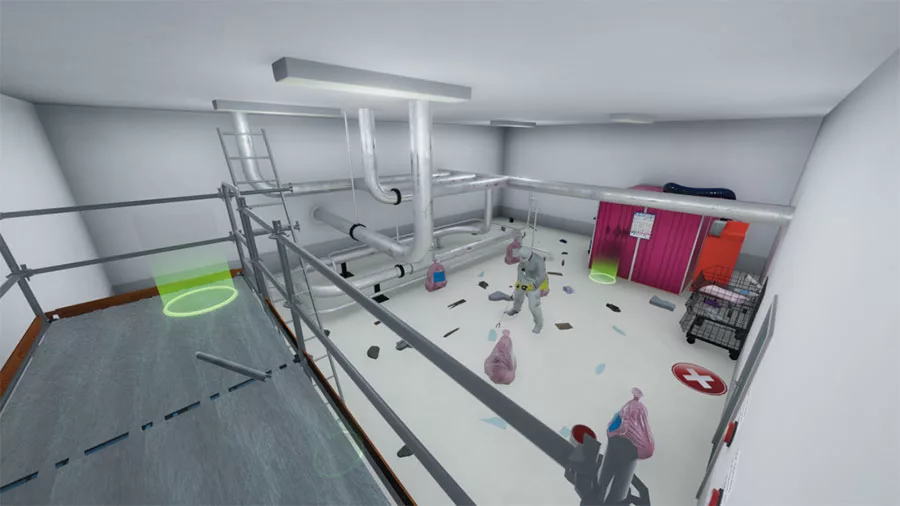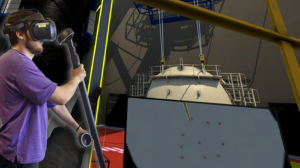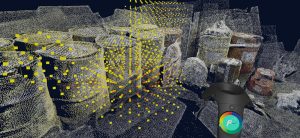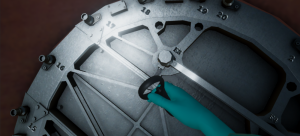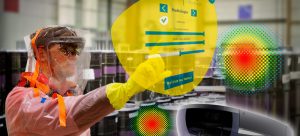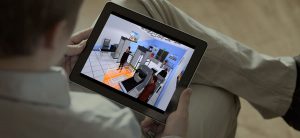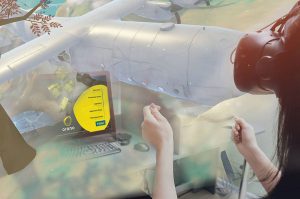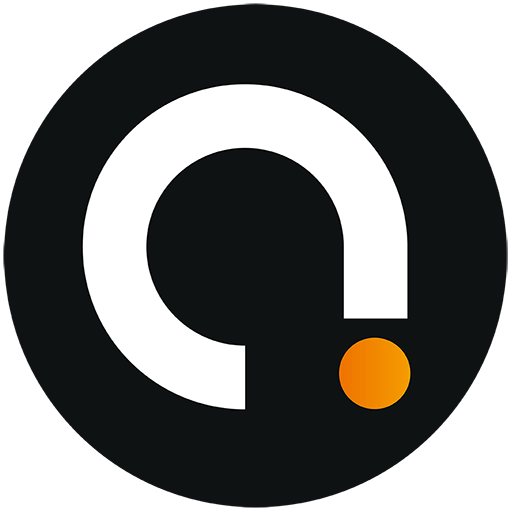The rise of battery gigafactories in France is creating a growing demand for highly qualified profiles in various technical fields. To address this need and highlight the opportunities in the sector, the UIMM (The Union of Industries and Metallurgical Trades) turned to Audace to develop an immersive virtual reality experience. This innovative tool aims to attract new talent and spark interest, particularly during trade shows. Designed with the OpenXR standard, the application is compatible with the leading VR headsets on the market and combines playful learning and innovation to unveil the future of the automotive industry.
DEVICE
The VR simulation developed by Audace consists of two complementary applications:
- Sector Discovery: The first application offers users an immersion into the world of automotive through virtual tours of factories, workshops, and assembly lines, enhanced with employee testimonials to provide an overview of the sector’s professions.
- Serious Game: The second application invites participants to embody a character in a futuristic industrial environment, reminiscent of a hero like Batman. In a secret underground base, users must complete professional missions, handle objects, use personal protective equipment (PPE), and solve technical problems.
The missions take place in a central emblematic location, the Cell Center, where users can choose between a “linear story” mode or free exploration. Among the activities offered: managing an Electromobile 4.0 and conducting risk inspections in a workshop. The technical challenges and mini-games are designed to reflect the realities of work in a gigafactory, immersing users in the heart of the production processes.
Technology
Developed using Unity and compatible with the Meta Quest 3, these applications use the OpenXR standard to ensure compatibility with other VR headsets, thereby enhancing their accessibility.
OBJECTIVE
The goal of this project is to allow a wide audience to discover the professions in the automotive industry, particularly those in battery gigafactories, in order to spark vocations in a sector undergoing significant transformation.
TARGET
The system is aimed at the general public, especially employees on standby or undergoing career transitions, as well as job seekers, during professional trade shows organized by the UIMM.
DISCOVER THE PROJECT IN PICTURES
